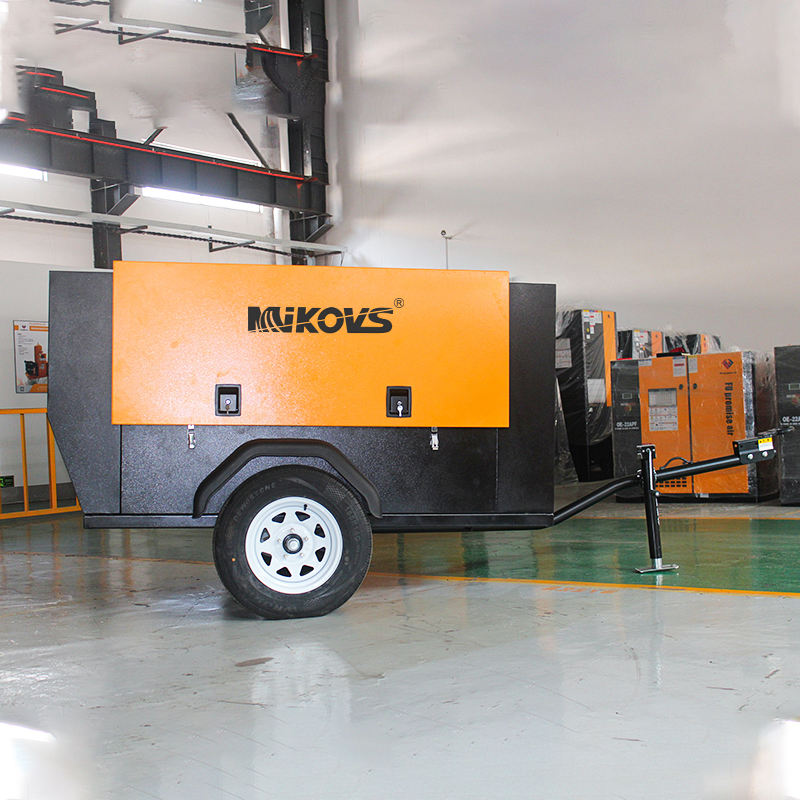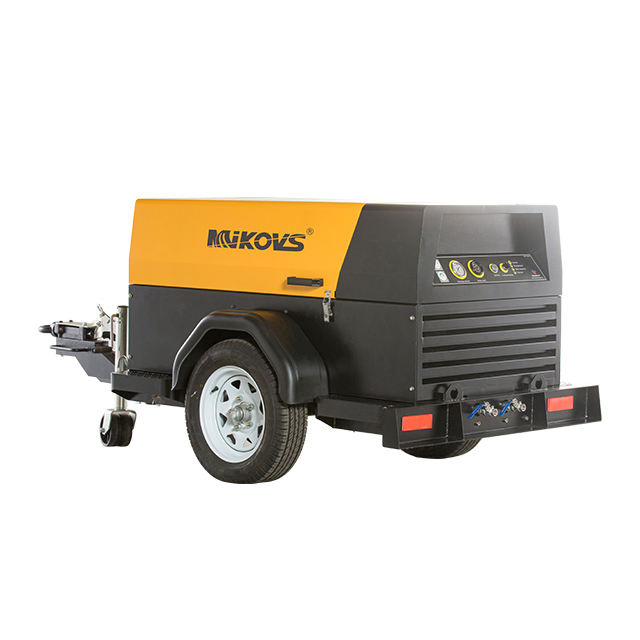Bearing service life is defined as the number of revolutions or hours a bearing experiences before pitting occurs under a certain load. Bearings within this life should experience initial fatigue damage on any of their bearing rings or rolling elements.
However, in our daily practical use, it can be clearly observed that the actual life of bearings with the same appearance under the same working conditions is quite different. There are many factors that affect the service life of bearings. Today, the editor briefly introduces the impact of bearing maintenance and rust prevention on the service life of bearings.
Bearing Maintenance Period
How often should bearings be serviced? Bearings can theoretically be used for 20,000-80,000 hours, but the specific life depends on wear during use, work intensity, and later maintenance.
How to maintain the bearing
In order to make the bearing fully play and maintain its due performance for a long time, it is necessary to do a good job in regular maintenance (regular inspection). It is very important to improve productivity and economy to find faults early and prevent accidents before they happen through appropriate periodic inspections. Storage Bearings are coated with an appropriate amount of anti-rust oil and packaged with anti-rust paper before leaving the factory. As long as the package is not damaged, the quality of the bearing will be guaranteed. However, for long-term storage, it is advisable to store it on a shelf 30cm above the ground under the conditions of humidity below 65% and temperature around 20°C. In addition, the storage place should avoid direct sunlight or contact with cold walls. Cleaning When the bearing is disassembled for inspection, first make a record of its appearance by photography or other methods. Also, confirm the amount of remaining lubricant and sample the lubricant before cleaning the bearing.
The steps of bearing maintenance
1. The bearings are strictly replaced regularly, and the replacement cycle should be set reasonably according to the operating conditions of the bearings;
2. New bearings must be checked before use. The inspection content is whether the packaging (preferably with instruction manual and certificate) is intact; whether the logo (factory name, model) is clear; whether the appearance (rust, damage) is good;
3. New bearings that have passed the inspection may not be cleaned under normal operating conditions (motors with more than 2 poles); new sealed bearings do not need to be cleaned.
4. Bearing caps and bearings must be cleaned before oil change. Cleaning is divided into rough cleaning and fine cleaning. The oil used for rough cleaning is clean diesel or kerosene, and the oil used for fine cleaning is clean gasoline.
5. After the bearing is cleaned, it should be rotated flexibly by hand. The radial and axial shaking of the hand can be used to preliminarily judge whether it is loose or the gap is too large. Check clearance if necessary. If the ball or roller frame is found to be seriously worn, rusted and metal peeled off, it should be replaced.
6. After the cleaning and inspection of the bearing, wipe off the cleaning agent with a white cloth (or dry it), and add qualified grease. It is not allowed to add different types of grease into the same bearing.
7. When refueling, avoid dust in the surrounding environment; refuel with clean hands, turn the whole bearing slowly with one hand, and press the oil into the bearing cavity with the middle finger and index finger with the other hand. After adding one side, proceed to the other side. According to the number of motor poles, remove excess grease.
8. Oil quantity of bearing and bearing cover: the oil quantity of bearing cover is 1/2-2/3 of the bearing cover capacity (the upper limit is taken as the number of poles of the motor is high); the bearing oil quantity is 1/2-2/3 of the inner and outer ring cavity of the bearing (The high number of motor poles takes the upper limit).
9. The motor end cover with oil filling hole and oil discharge hole must also be cleaned during oil change to keep the passage unobstructed. When refueling, the oil filling hole must be filled with oil.
10. Motors with oil filling holes must be oiled regularly. The oil replenishment period is determined according to the motor’s operating requirements and operating conditions (generally, the two-pole motor is operated for 500 hours in 24 hours).
11. When replenishing oil, the oil filling port must be clean. The amount of oil replenishment is limited when the bearing temperature rises only by 2°C (for a 2-pole motor, use an oil gun to quickly fill the oil twice and observe for 10 minutes, and decide whether to continue to add oil according to the situation).
12. When the bearing is disassembled, it must be ensured that the force point is correct (the force on the inner ring on the shaft, the force on the inner and outer rings of the end cover), and the force is even. The best methods are press-fit method (small motor) and shrink-fit method (large interference and large motor).
13. When installing the bearing, apply a little grease evenly on the contact surface. After the bearing is installed, the clearance between the inner ring of the bearing and the shaft shoulder must be checked (it is better to have no clearance).
14. The heating temperature of the bearing shrink sleeve method is controlled at 80 to 100°C, and the time of 80 to 100°C is controlled within 10 minutes. For oil heating, make sure to use non-corrosive, thermally stable mineral oil (transformer oil is best), and both the oil and the container should be clean. Set up a metal net at a distance of 50 to 70mm from the bottom of the oil tank, and place the bearing on the net, and hang the large bearing with a hook.
15. Regularly inspect the motor, and record the operating status of the motor (motor vibration, motor and bearing temperature, motor operating current). Generally, the two-pole motor above 75KW should be used once a day. When there is an abnormal operation situation, strengthen the inspection and inform the relevant parties.
16. All maintenance work of the bearings must be recorded well, as the basis for setting the regular replacement cycle of the bearings and judging the quality of the bearings.
Bearing cleanliness
The cleanliness of the bearing has a considerable impact on the life of the bearing. The higher the cleanliness of the bearing, the longer the service life. The lubricating oil with different cleanliness has a great influence on the life of the ball bearing. Therefore, improving the cleanliness of the lubricating oil can prolong the life of the bearing. In addition, if the dirt particles in the lubricating oil are controlled below 10um, the life of the bearing will also increase several times.
(1) Impact on vibration: Cleanliness seriously affects the vibration level of the bearing, especially the vibration in the high frequency band is more significant. Bearings with high cleanliness have low vibration velocity values, especially in high frequency bands.
(2) Effect on noise: The effect of dust in bearing grease on noise has been tested, and it is proved that the more dust there is, the greater the noise will be.
(3) Influence on lubrication performance: The decline of bearing cleanliness not only affects the formation of lubricating oil film, but also causes the deterioration of lubricating grease and accelerates its aging, thus affecting the lubricating performance of lubricating grease.
The method of bearing rust prevention
1. Surface cleaning: Cleaning must be carried out according to the nature of the surface of the anti-rust object and the current conditions, and an appropriate method must be selected. Commonly used are solvent cleaning method, chemical treatment cleaning method and mechanical cleaning method.
2. Surface drying After cleaning, it can be dried with filtered dry compressed air, or dried with a dryer at 120-170 ℃, or wiped dry with clean gauze.
3. Soaking method: Some small items are soaked in anti-rust grease, and the surface of the cross tapered roller bearing is allowed to adhere to a layer of anti-rust grease. The thickness of the oil film can be achieved by controlling the temperature or viscosity of the anti-rust grease.
4. Brushing method: It is used for outdoor construction equipment or products with special shapes that are not suitable for soaking or spraying. When brushing, pay attention not only to avoid accumulation, but also to prevent leakage.
5. Spraying method: Some large anti-rust objects cannot be oiled by immersion method, and the turntable bearings are generally sprayed with filtered compressed air at a pressure of about 0.7Mpa in clean air. The spray method is suitable for solvent-diluted anti-rust oil or thin-layer anti-rust oil, but perfect fire prevention and labor protection measures must be adopted.
It should be noted that the following acid solutions cannot be used for bearing rust removal: sulfuric acid, hydrochloric acid, dilute sulfuric acid, and dilute hydrochloric acid. Because these acids will destroy good metal parts, these types of liquids must not be used! In daily life, there are several liquids that can remove rust without harming good metal parts, but the effects are different. The first is dilute oxalic acid, and the ratio of water to water is 3:1, dilute oxalic acid 3, water 1. This one is slower, but it works great and is sold everywhere. The second is gun oil, also called mechanical derusting oil, which is not very easy to buy. This kind of oil can quickly derust, and the effect is very good.


